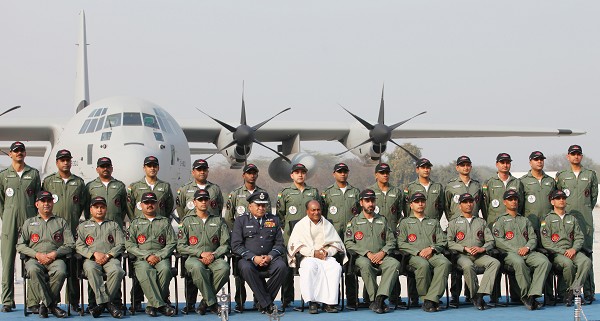Few realise that the genesis of Sri Lanka’s Tamil problem
with India lies buried in its decision to let Pakistan’s troop laden aircraft refuel
and fly onto the killing fields of Bangladesh in 1971.
After Pakistan unleashed a brutal military campaign in early
1971, to stifle an uprising in its eastern wing by murdering millions of its
civilian citizens, India banned Pakistani aircraft from overflying India.
 |
| Mrs Indira Gandhi |
Pakistan’s President Yahya Khan believed his troops only
had to “Kill three million of
them (East Pakistan’s Bengali citizens) … and the rest will eat out of our
hands.”* To carry out this task he needed to reinforce his forces in
the East. The military ruler launched
what was titled operation `Great Fly-In’ to transfer the 9th and 16th
infantry divisions of the Pakistan Army to the East. Troops were to be flown out
to Dhaka in February 1971, using Pakistan International Airlines’ fleet of Boeings
and the Pakistan Air Force’s Hercules transport aircraft, bolstered by more aircraft
lent by Turkey and Iran.
However, with Mrs
Indira Gandhi banning Pakistani aircraft from using Indian airspace from
January that year, these planes needed to fly a longer route which required refuelling
facilities at Colombo.
Khan reached out to
Sri Lanka’s President Srimavo Bandaranaike. Strangely, Bandarnaike allowed
Pakistani troop carting aircraft, rights to refuel at Colombo even as the
airport was guarded by Indian soldiers against left wing extremists who were
trying to topple her regime!
 |
| Sri Lanka's Srimavo Bandaranaike |
A furious Mrs Gandhi
eventually put an end to this strange accord between the island nation and
Pakistan, but not before Yahya Khan had managed to ship some 25,000 soldiers,
complete with equipment to bolster his deputy Lt. General Tikka Khan’s murderous
rule over East Pakistan.
Mrs Gandhi saw Bandaranaike’s
action not only as anti-Indian perfidy but as betrayal of the good
neighbourliness India had displayed in a 1964 pact where it had agreed to
repatriate some 5,25,000 Tamils, ** descendants of plantation labour brought to Lanka by the British in the
19th century. In return, Sri Lanka was to have given citizenship to
the remainder 3,00,000 `Indian’ Tamils, which it had denied to them since its
independence in 1948.
Indian labour, often
in the form of forced or bonded labour, and entrepreneurs had helped built the
economies of many British ruled territories from Fiji and Guyana to Mauritius
and Kenya. With the end of the colonial era, many people of Indian origin had sometimes
to face a different kind of racial hostility in their new homelands but nowhere
other than in Sri Lanka, Burma and Idi Amin’s Uganda were they denied basic
rights to live in the country they were born in.
The 1964 pact hammered
out by a docile Indian prime minister Lal Bahadur Shastri with the far more
aggressive Bandarnaike, was seen as a
landmark pact where India bent over backwards before a neighbour to buy
goodwill.
 |
| Shastri with Bandaranaike |
Even before the ink on
the pact had dried, Mrs Srimavo Bandaranaike dealt her first blow - `Indian’
Tamils given citizenship would form a separate electorate and could not vote
with the rest of the Sri Lankans. The ruling Congress party had to deal with a
stormy Indian Parliament which was not at all amused by either Shastri’s
`largese’ or Bandarnaike’s bid to turn the remaining `Indian’ Tamils into second
class citizens. Still it lived with this one sided pact and literally turned
the other cheek to try work out better relations with a smaller neighbour.
Consequently, the 1971
attempt by the same lady to help India’s enemy, was like pouring hot oil on burning
embers. The problem for Sri Lanka and Mrs Bandarnaike was that Mrs Gandhi was
not a lady who easily forgot or forgave a slight.
Sri Lanka like most
Asian nations always had deep ethnic fault-lines, but unlike India or
Singapore, it did not try to resolve them by turning to nation-building. It
instead relied on resurgent Sinhala nationalism to hold the island together.
 |
| Sri Lanka Demography |
Sinhala, who claim
descent from the followers of Prince Vijay Singha, a prince of a mythical
kingdom in Bengal who according to legend was exiled to the island sometime
around 543 B.C, form about 75 per cent of the population. However, Sri Lankan
Tamils who pre-date Sinhalese on the island and speak a slightly different
version of Tamil, from Indian Tamils, and live in the Eastern part of the
island form about 12 per cent of the population. `Moors’ or descendants of Arab
traders make up about 9 per cent of the population and `Indian’ Tamils who live
in the central highlands where most of the tea and rubber plantations are, make
up for the remaining 4 per cent of the population.
The attempts by
successive Sinhala-controlled Sri Lankan governments to forcibly repatriate the
impoverished `Indian’ Tamil labourers
had more to do with the tensions between the Sri Lankan Tamils and the Sinhalese
than any real threat to Sinhala domination of the island by the `Indians.’ The
underlying fear seems to have been that `Indian’ Tamils might make common cause
with Sri Lankan Tamils and take on Sinhala control of the government.
In 1948, the Sri Lankan
Tamils who were part of the first ruling coalition through their own party had
joined to frame a citizenship act which disenfranchised `Indian’ Tamils. But
with growing Sinhalese chauvinism, eight years later they faced their first
come-uppance. In 1956, the Ceylonese Parliament passed the `Sinhala Only Act’,
which replaced English with Sinhalese as the sole official language in the
island ignoring Tamil, a move which led to a spate of ethnic riots.
Attempts at
state-sponsored colonisation of Sri Lankan Tamil areas led to more riots and bitterness.
In 1973, a policy of educational standardisation was brought in, ostensibly to
rectify regional disparities in University enrolment, but which in effect saw
more Sinhala enrolment and fewer chances for Tamils to get University seats.
However, for Mrs
Gandhi, the last straw was the then Sri
Lankan President J.R.Jayawardene’s bid in 1979 to bring in Americans to balance
Indian power in the straits. Jayawardene strengthened Sri Lanka’s political and
military engagement with the US and gave them rights to set up a Voice of
America station on the island, which Indians saw as a camouflaged electronic
`listening station’ directed against the mainland.
Mrs Gandhi who came
back to power in 1980, must have vividly remembered the American attempt to
frighten India with its deployment of the Seventh fleet at the height of the
1971 war with Pakistan, and seen the Sri Lanka-US friendship as against Indian
interests.
Sri Lankan Tamil
groups fighting for an `Eelam’ or homeland who had earlier relied on a distant
and not too helpful Britain in their fight for rights, suddenly found a
champion and refuge in India under Mrs Gandhi.
 |
| Tamil rebels in action |
Mrs Gandhi unleashed
her `dogs of war’. In a thinly disguised move, Indian intelligence agencies
started training several motely groups of Sri Lankan Tamil rebels, none of whom
saw eye to eye in their aims or objectives.
However, the rebels
made life difficult for Jayawardene and Sri Lanka. An inept and not too
professional Sri Lankan army was hard put to handle the insurgency.
In time, the ding-dong
battle between the Tamil groups and Sri Lankan forces, saw Tamil areas
blockaded, forcing India to air-drop food and medical supplies in 1987. Eventually in the same
year, India stepped in and sent peace-keeping troops into Sri Lanka and
brokered an accord between the island government and Tamil Eelam fighters,
among whom the Liberation Tigers of Tamil Eelam (LTTE) had emerged as the
prime mover.
While most Tamil
groups disarmed after the accord, LTTE refused to hand over arms. Indian peacekeepers were forced
into a situation where they had to fight the very LTTE, they had come in to help
out. Strange as it seems, intelligence sources aver, the Sri Lankan government
whom India had bailed out with its deployment, entered into a secret deal with
the LTTE in 1989, supplying them with arms and ammunition to fight Indian
troops!
 |
| Indian Peacekeepers in Sri Lanka |
As casualties mounted,
calls for the return of Indian troops grew louder at home and in Sri Lanka. Mrs
Gandhi’s son, Rajiv Gandhi who was India’s prime minister during this phase,
refused. But after his government was replaced by V.P.Singh’s, India’s Lankan
adventure was called to an end with the last troop ships crossing the Straits in mid-1990. The
32-month presence of Indian peacekeepers in Sri Lanka resulted in the deaths of
1200 Indian soldiers and over 5000 Sri Lankans.
LTTE did not stop at
fighting Indian soldiers. In 1991, suicide bombers sent by the group killed Rajiv
Gandhi at an election rally. The Sri Lankan Tamil issue became `untouchable’ in
Indian politics. Even the Tamil parties shied from associating with Sri Lankan Tamils.
India probably
silently encouraged the Sri Lankan government after the slaying of Rajiv Gandhi,
to fight it out with the thuggish LTTE, which was ruling over the Tamil majority areas in a dictatorial manner, and finish it off as a potent force for ever.
However, the brutal
manner in which Sri Lankan forces ended their battle with the LTTE, killing
thousands of civilians, corralling tens of thousands more into `camps’, has
revived sympathy and support for the Sri
Lankan Tamils once again in India.
History, they say, is all about
the story being repeated with different characters. One wonders where the latest events where the
Sinhala majority refuses to give basic rights back to the Tamil minority will
take Sri Lanka and India to. Hopefully not back to a full circle.
*Robert Payne, Massacre [1972], p. 50.
** Indo-Sri
Lankan pact of 1964 and the problem of statelessness – a critique : http://www.onlineresearchjournals.com/aajoss/art/82.pdf


















